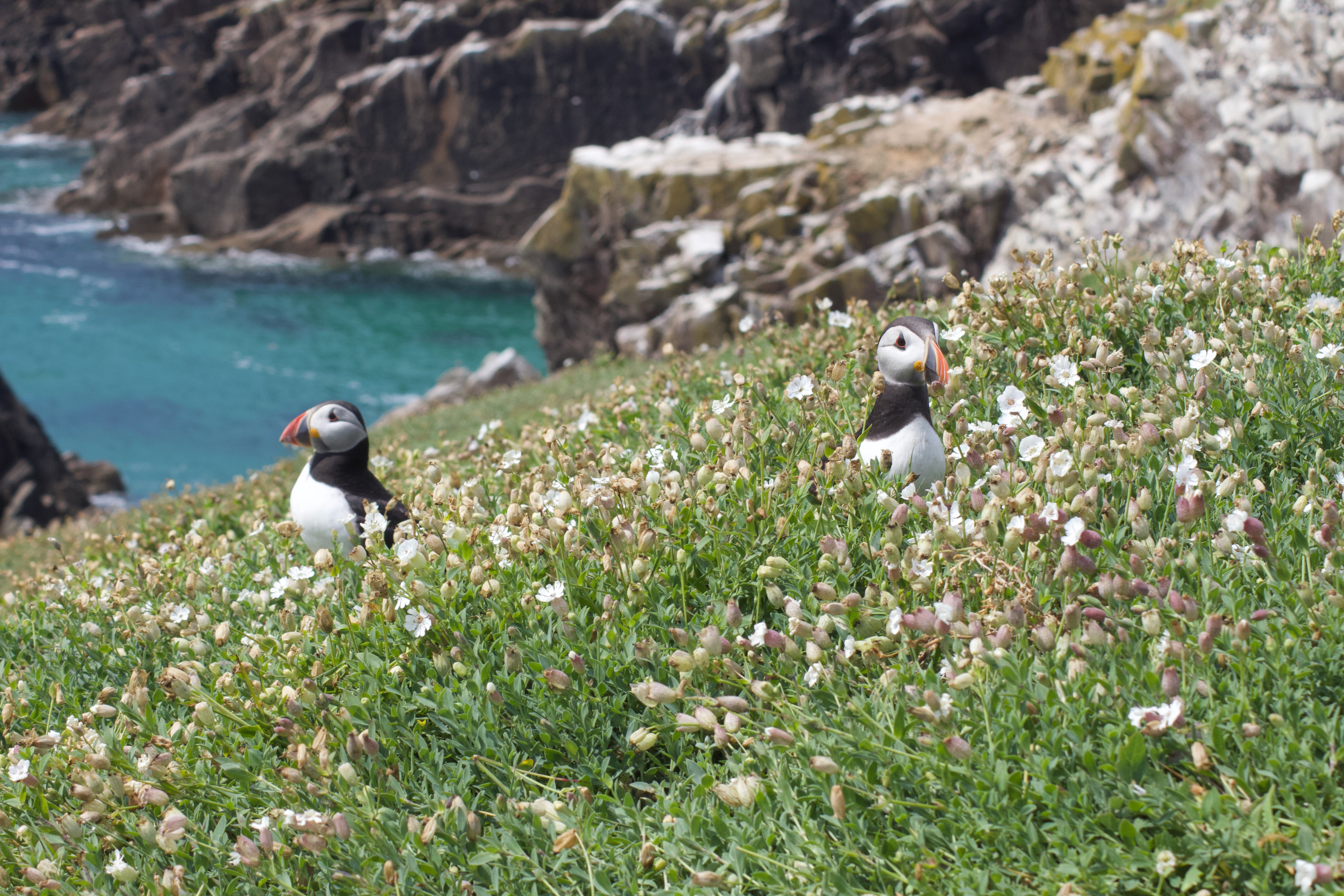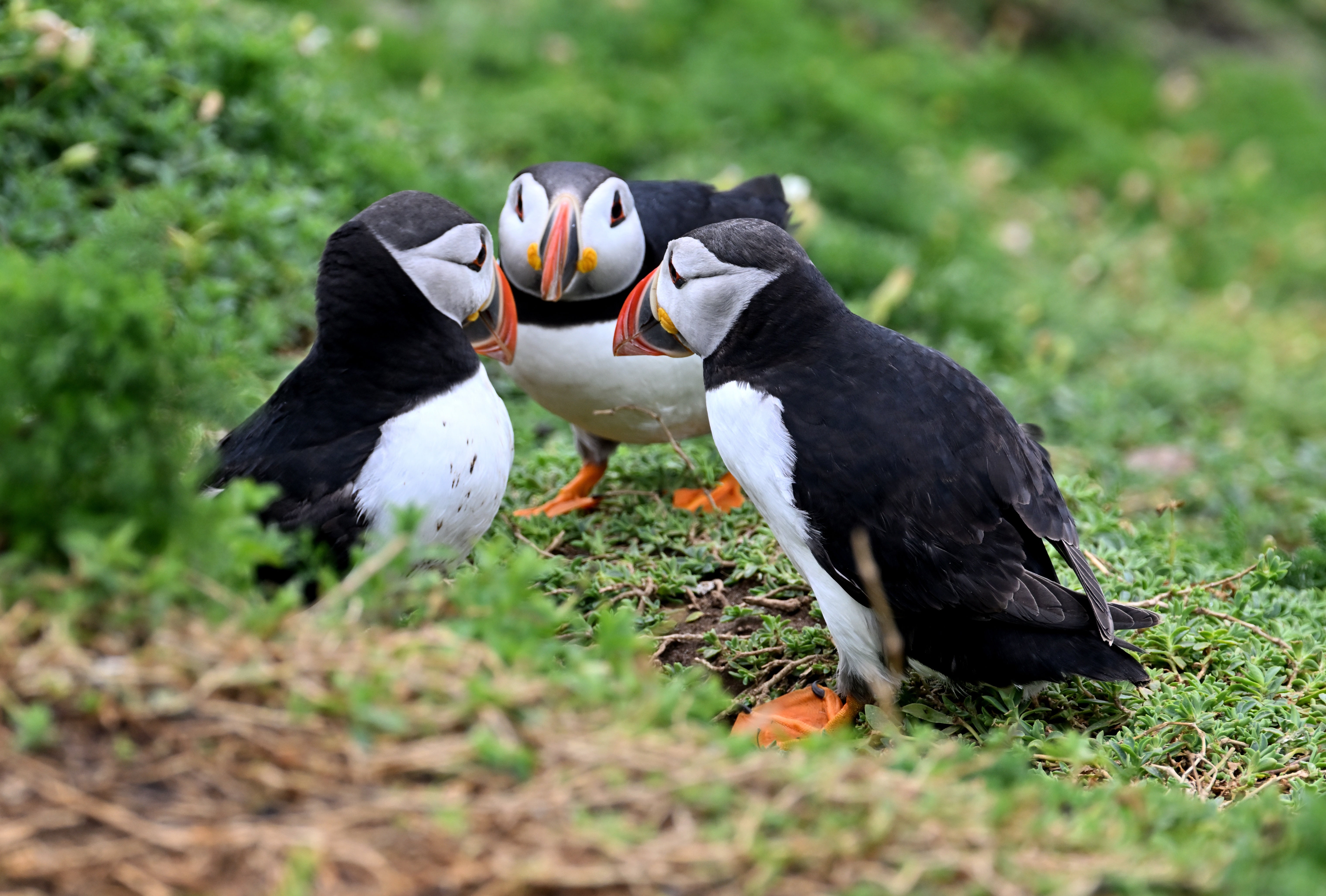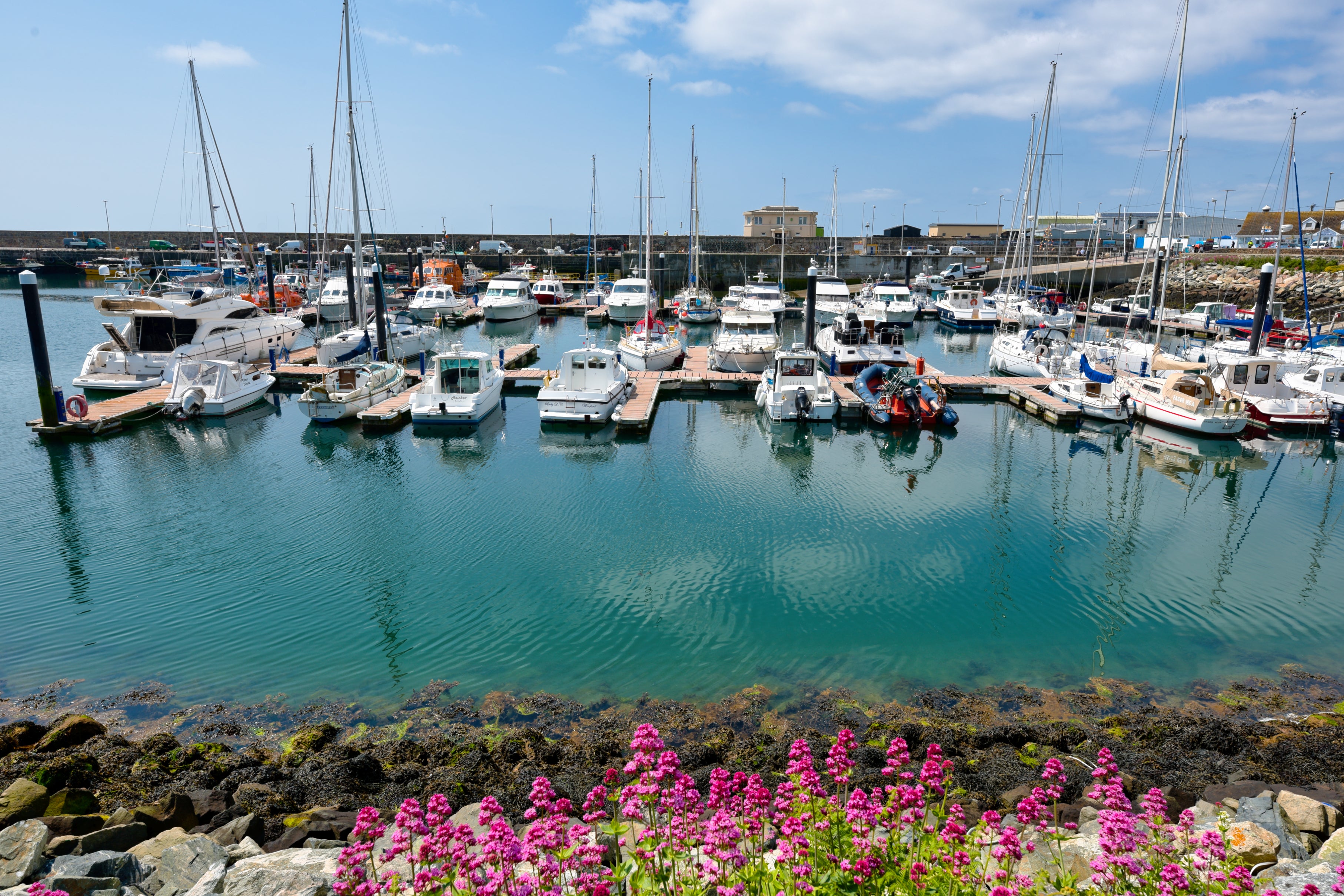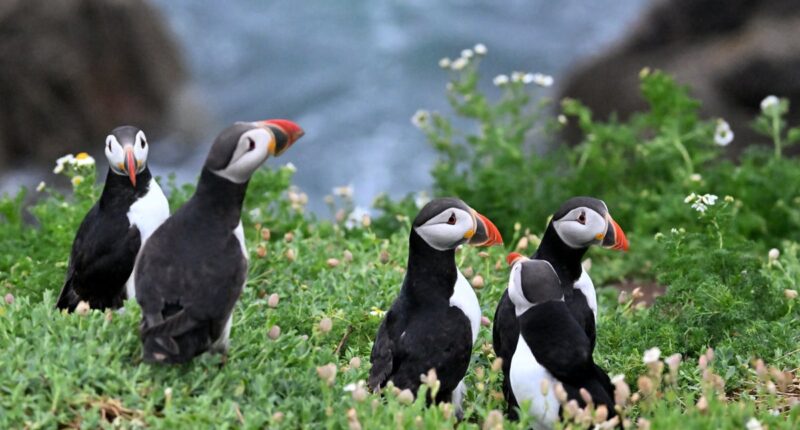While Skomer Island in Wales often gets the headlines for its puffin colony, I’ve discovered an Irish outpost that is home to a large colony and is easier to visit.
A friend of mine has long disputed my description of puffins as “bonky”, claiming it’s both “ridiculous” and “not a word”. But I think it fits perfectly. These seabirds are both bonkers and wonky-looking, with their wobbly little walks and seeming inability to fly in a straight line.
And when I saw them up close, waddling on the edge of the sea cliffs on the Irish island of Great Saltee, I became even more confident that I was right all along.
Every year on this rugged island off Ireland’s Southeast coast, a colony of puffins migrate to breed and nest. And every year, between April and July, people like me flock to Great Saltee Island to see them up close.
It doesn’t take long to spot them. Mere minutes after landing on the island I was surrounded by a veritable swam of puffins as they pottered between our legs, waddling like tipsy toddlers between the thick patches of purple wildflowers and their burrows, the exact same ones they nest in year after year.

I crouched down, silent, and leant against a boulder covered in yellow moss, in the hopes that they would get closer still. And they did.
Puffins waddled right past my feet, popping in and out of their burrows and leaping off the cliffs, their bright orange feet splayed out and their bums wobbling as they flew against the sea breeze. More than one looked right into my eyes as they tried to work out who, or what, I was. At one point, I looked down at a burrow I was passing only to see a distinctive beak poking out, its sharp orange ridge the only part visible in the dark hole.
Read more: Forget St Patrick’s Day – here’s why you should head to Ireland for St Brigid’s Day instead
As a lifelong puffin fan, it was everything I’d hoped for.
Like similar puffin colonies in Wales, their population is on the up (as is their popularity among puffin spotters). By coincidence, I’d been on the Pembrokeshire coast the week before, in the hopes of seeing the birds on Skomer Island. But while Skomer is positively teeming with puffins (the Wildlife Trust of South and West Wales just counted a record number of 43,626 puffins on the island), tickets for the landing sell out months in advance.
A ticket to the Saltee Islands, however, is much easier to snag and costs just £34 return.

Though some dates book out, I found tickets relatively last minute, the week before I set off. And the journey is an experience, too. I spent much of the 20-minute crossing in the cockpit, with the three local lads who drove the ferry barefoot and handed out soggy life jackets when it was time for us to switch to the dinghy that could navigate the shallower waters our ferry could not.
I hadn’t realised it was possible to be rocked in four different directions simultaneously, but as soon as our boat hit the Irish Sea we were bobbing like an apple at Halloween, each wave causing a squeal of joy or horror among passengers.
Read more: Honouring darkness and death in grand style – why you should celebrate Halloween the Irish way
But as soon as I leapt over the tangled seaweed on the shore, miraculously avoiding putting my whole foot in the water, I spotted my first puffin, hidden in a craggy nook on the side of the dark green hills that lined the beach.
And that was just the first of them. When I finally tore myself away from the hundreds of puffins at their main breeding ground, I started hiking the trail that weaves around the south of the island. For an hour, I walked past rocky outcrops overflowing with guillemots and razorbills, and under nesting black-backed gulls prone to swooping down and divebombing any potential human threats.
.jpeg)
The trail weaves through tall swathes of fern, up and over the headland that looks back over the island, the rocky ridges and arches jutting into and over the sea, the dense lushness of the grass on top scattered with thousands of bright yellow buttercups and bluebells. As we walked further and the puffin-watchers dissipated, we saw seals on the rocks, then three tiny gull chicks, their fuzzy feathers making them look like leopard cubs on the sandy beach.
However, the island, and County Wexford itself, isn’t just for puffin-watchers. Wexford town is about 25 minutes up the coast, with seafood restaurants like La Côte, where you can tuck into dishes like sea trout tartare with caviar, or herb-crusted local hake with zingy lemon confit, all while enjoying views out over the sea.
Read more: The UK and Ireland surfing spots you should try
Kilmore Quay, where the ferries depart (and the aforementioned hake is caught), is a cute harbour village where you can pick up artisanal breads for an island picnic and delve into top notch fish and chips from the Saltee Chipper when you land back in – and after a day on the wind-battered island, nothing tastes as good as a pile of hot, salty chips, crispy battered haddock and mushy peas.

To cap off our visit, we saw a few more puffins, much hardier characters than the main gang, who clung to the wind-battered cliffs on the northern edge of the island looking like hardened thugs. Their feathers flurried in the wind as they wobbled back onto the land after diving into the sea, their beaks filled to the brim with lines of silver sand eels.
I watched them with my friend as they landed, one after another after another. And there wasn’t another person around to be seen.
How to get there
Fly to Dublin from London with Aer Lingus from £49 one-way. Flight time is around 1 hour 25 minutes. Kilmore Quay is a 2 hour drive away, or you can get the train to Wexford and take a local bus to the ferry departure point.
A ticket to the Saltee Islands costs £34 return and can be bought at Threesisters.ie.
Where to stay
Rooms at the Talbot Hotel in Wexford start at €107 (£91).
Book now
Nicola Brady was travelling as a guest of Visit Wexford.
Read more: How sheep, seaweed and the shore in Ireland helped me bond with my father









